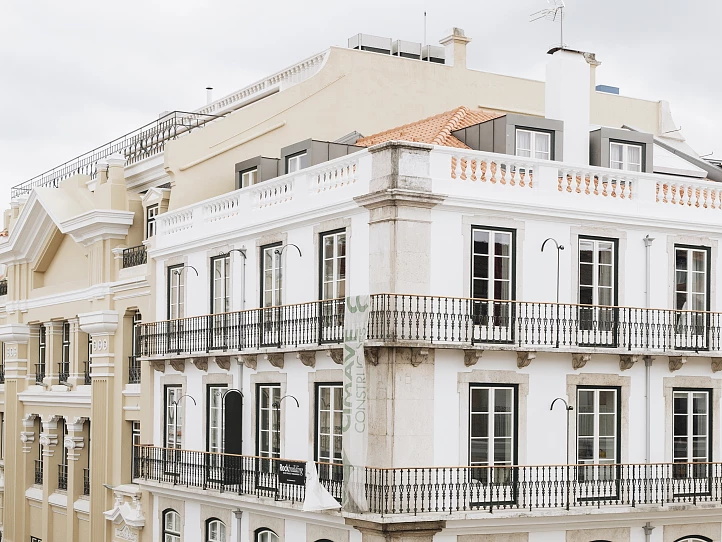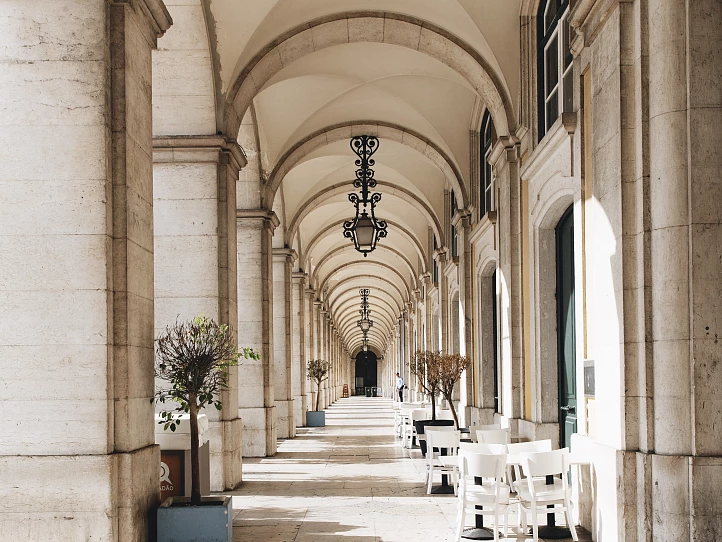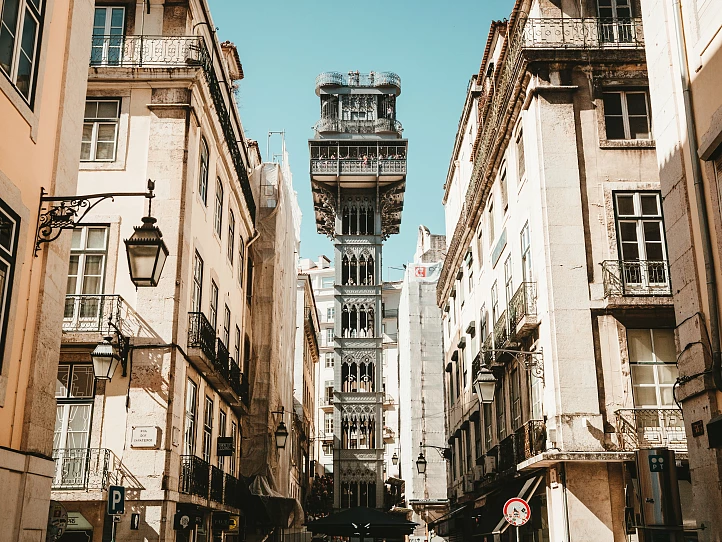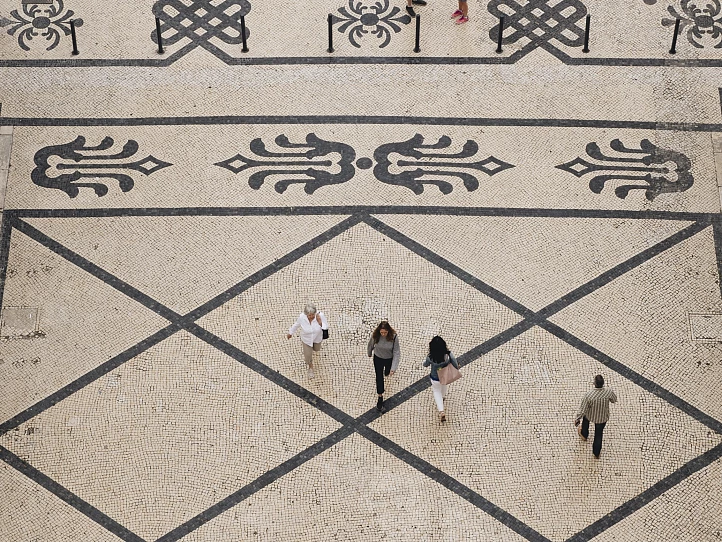
ABOUT THE LOCATION
Baixa is the heart of Lisbon, comprising a grid of streets dotted with shops, cafés and boutiques, and culminating in the wide, waterfront Praça do Comércio.
It is a busy commercial hub with pedestrianised mosaic walkways and is home to trendy stores, boutique shops and stunning properties for sale. Rua Augusta, one of Baixa’s main attractions, is to Lisbon what Covent Garden is to London.
You can think of Baixa like the central point where the historic centre converges, connecting Chiado, Alfama and the Avenida da Liberdade with the Tagus River.


INVESTMENT POTENTIAL
One of the advantages of buying an apartment in Baixa is that it grants investors and people interested in relocating to Lisbon access to all amenities at their doorstep.
Nowadays, the vast majority of buildings in Baixa are home to banks and offices and have more recently been reborn as a commercial and tourist area. Whilst short-term rents are heavily restricted in this neighbourhood, properties in Baixa can be rented out on a long-term basis and have an estimated annual yield of 3.7%.
Baixa is the neighbourhood where you have everything at your disposal while experiencing a truly Lisbon lifestyle, from traditional Portuguese restaurants on your doorstep to the lovely promenade by the banks of the Tagus River.
ADVISERS’ OPINION

Baixa is a strong market for short-term rental investments and is in the process of applying for UNESCO World Heritage status, which would help to drive its value even further.
WHY TO BUY
- Historic architecture
- Great for generating rental income
- Lively atmosphere and vibrant street life
- Walking distance to Tejo river
- Iconic neighbourhood
KNOW BEFORE YOU GO
- Strong market for short-term rental investments
- Pedestrian Rua Augusta
- Elevador de Santa Justa built in 1902 by an Eiffel disciple
- Praça do Comércio: the oldest square in Lisbon
- Tiled Art Deco shop-fronts, terraced restaurants and street artists
INFRASTRUCTURE DEVELOPMENT
Baixa was originally built in the 18th century after the 1755 earthquake that destroyed much of the city. The reconstruction was designed by the architect Eugénio dos Santos, who created a grid-like street plan with wide avenues and large public squares.
This design, known as the "Baixa Pombalina", helped to modernize Lisbon and became a model for other European cities. The neighbourhood also became a centre for commerce, with many shops and businesses opening along the main avenue, the Rua Augusta.
Today, Baixa is a popular tourist destination, known for its historic architecture, lively atmosphere, and vibrant street life.


HISTORY
The word, ‘Baixa’ in Portuguese means ‘low’. This is an apt name for this neighbourhood as it’s the only part of Lisbon that is totally flat. It was rebuilt after the devastating earthquake in 1755, and unlike a lot of Lisbon, Baixa is organised in a grid, connected by a series of squares where imposing neo-classical buildings tell of an age of prosperity and power.
To this day, Baixa remains Lisbon’s bustling area of commerce, but it hasn’t lost its connection to its heritage, to Old World Lisbon. Stroll along the charming streets of Baixa and you’ll still find the same families specialising in artisan trades, passed down from generations. For those who take the time to explore Baixa, you can find little pockets of magic that are a world away from the touristy vibe.
THE AREA TODAY
Starting by the river, take a stroll around Praça do Comércio, a wide square where many celebrations are held. To the north of the square, the pedestrian Rua Augusta opens up and is alive with outdoor cafés, tiled Art Deco shop-fronts, terraced restaurants and street artists, highlighted by the huge Arco da Rua Augusta (and visitors can climb to the top of the arch!).
In Baixa, each street has its own distinct charm. Rua das Portas de Santo Antão is a lively pedestrian street known for its seafood restaurants. Nearby, at Rua de Santa Justa, there is the Elevador de Santa Justa, built-in 1902 by an Eiffel disciple. The 32-meter elevator takes you to a floor with superb views over the city and the exit to Bairro Alto.
Rossio, at the north end of Baixa, is the oldest square in Lisbon and remains a pleasure to stroll through – make sure to drink a small glass of Ginja, a local cherry liquor, at the Ginjinha bar.

PROPERTIES FOR SALE
ATHENA INSIGHTS

BUYING GUIDES
LEARN MORE
HEALTHCARE & LIFESTYLE
FIND OUT MORE
FOR OWNERS
LEARN MORE
FINANCE & MARKET
LEARN MORE
RESIDENCY
LEARN MORELOCATION
A 20-minute drive from Lisbon airport, Baixa is Lisbon's well-connected historical centre










 GET DIRECTIONS
GET DIRECTIONS
